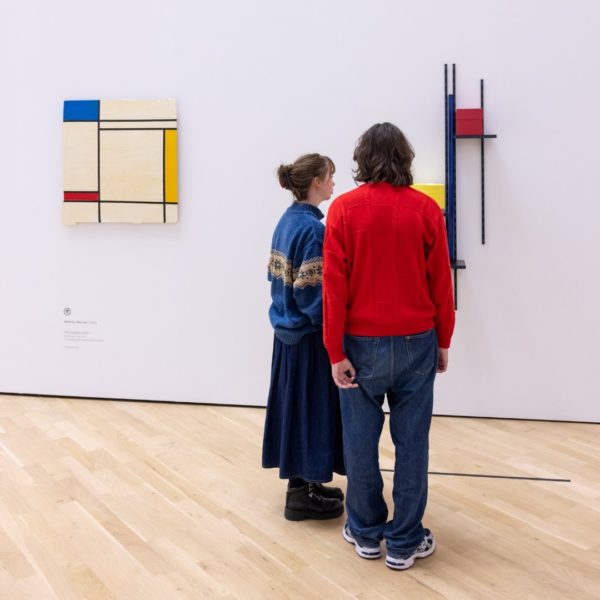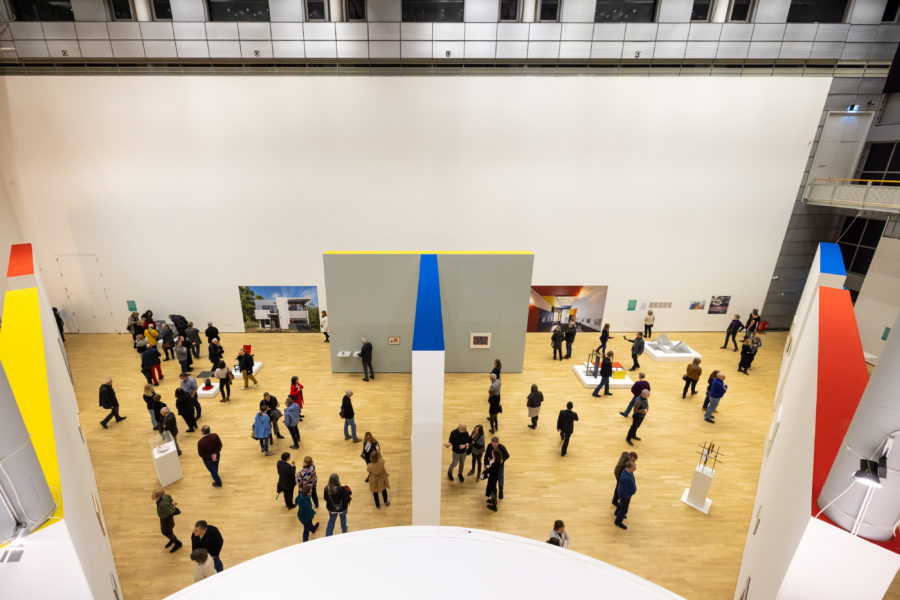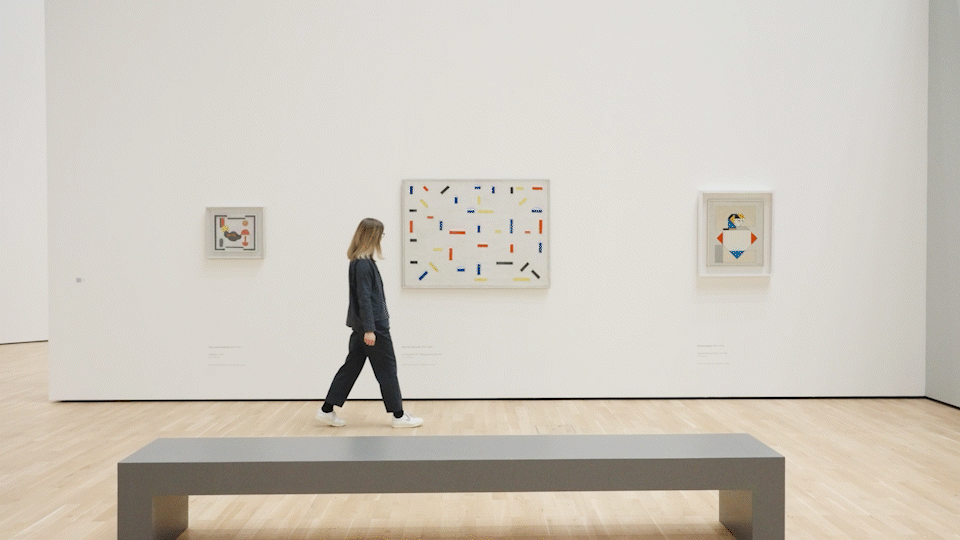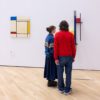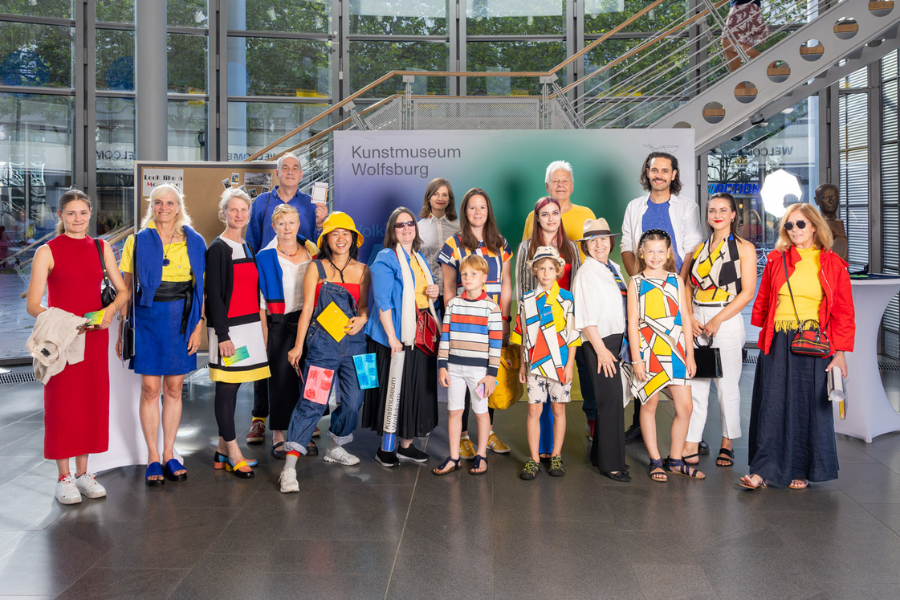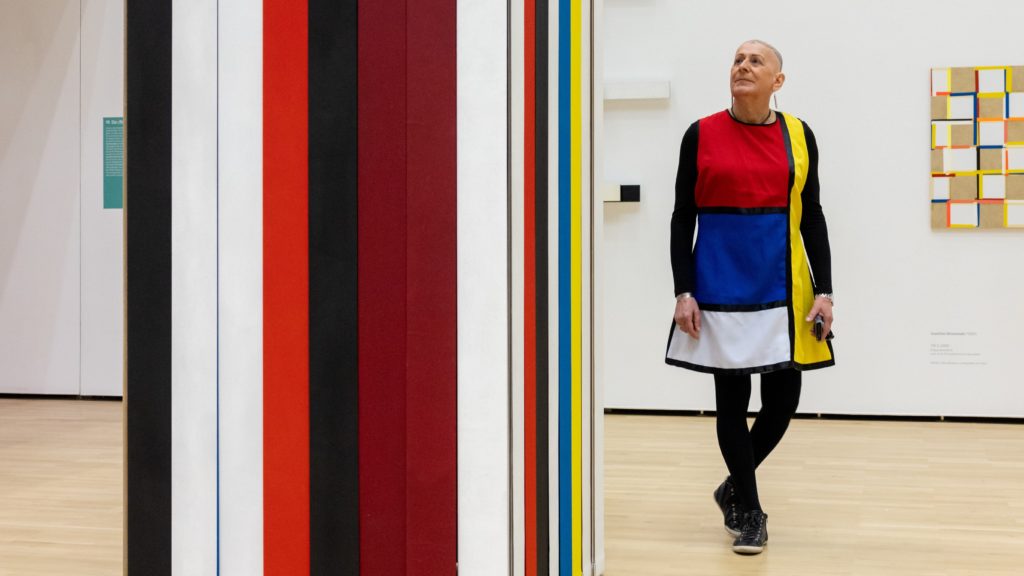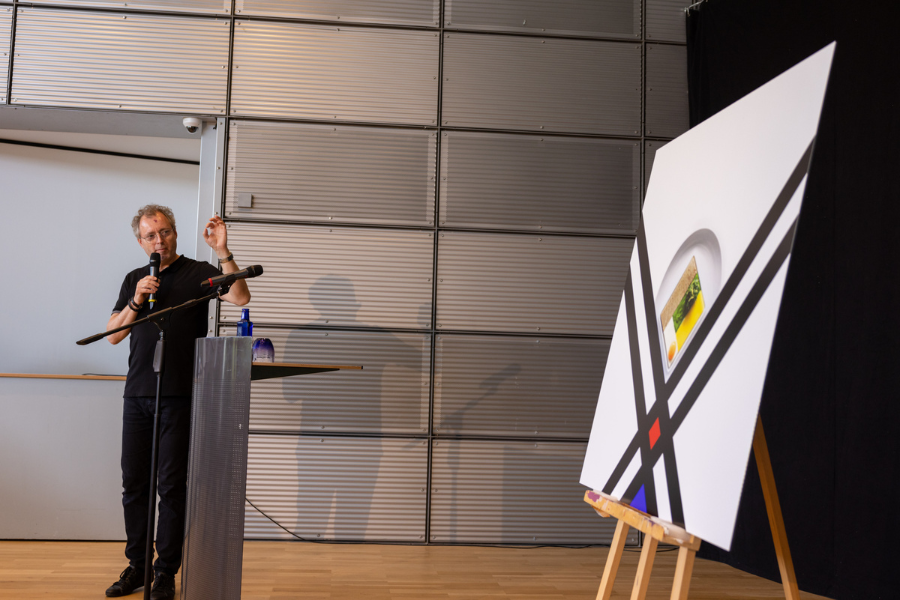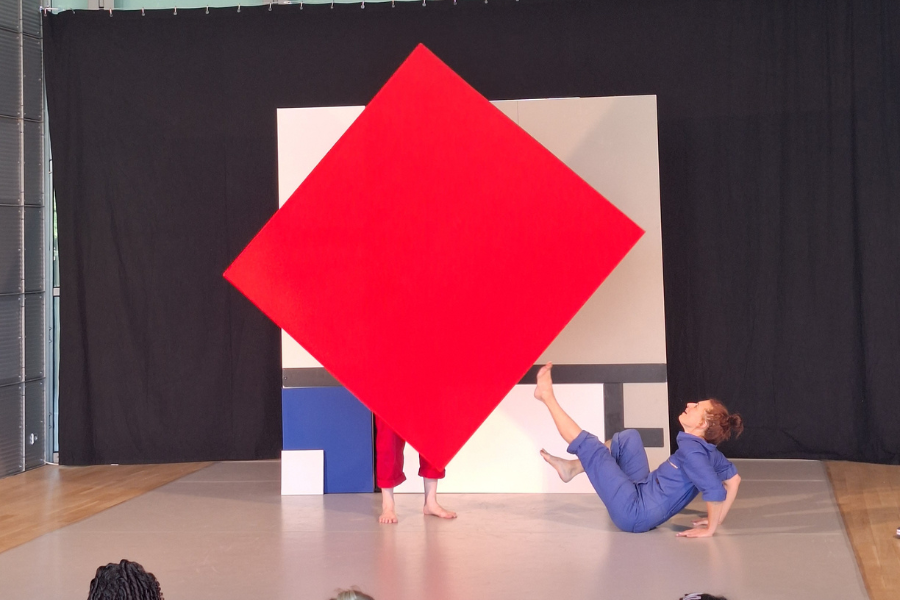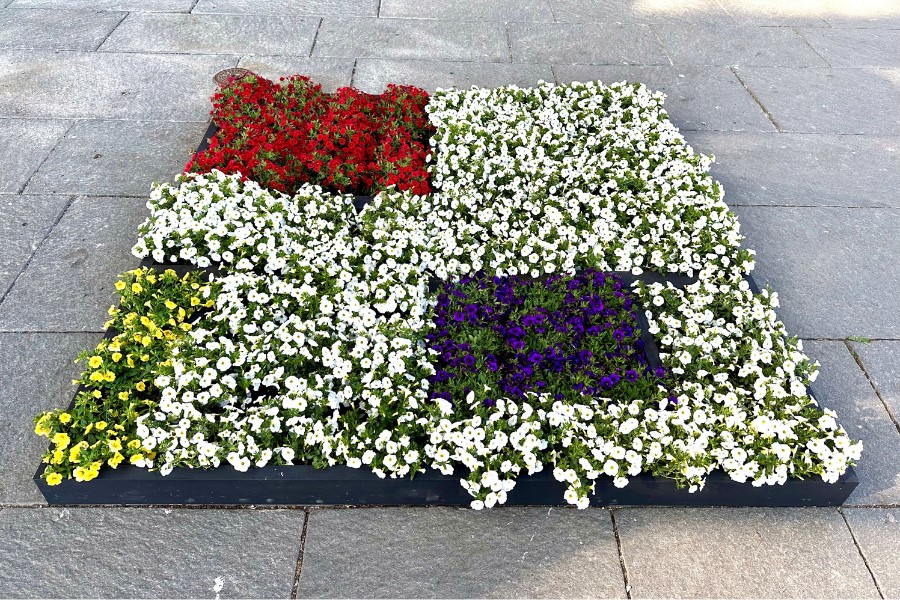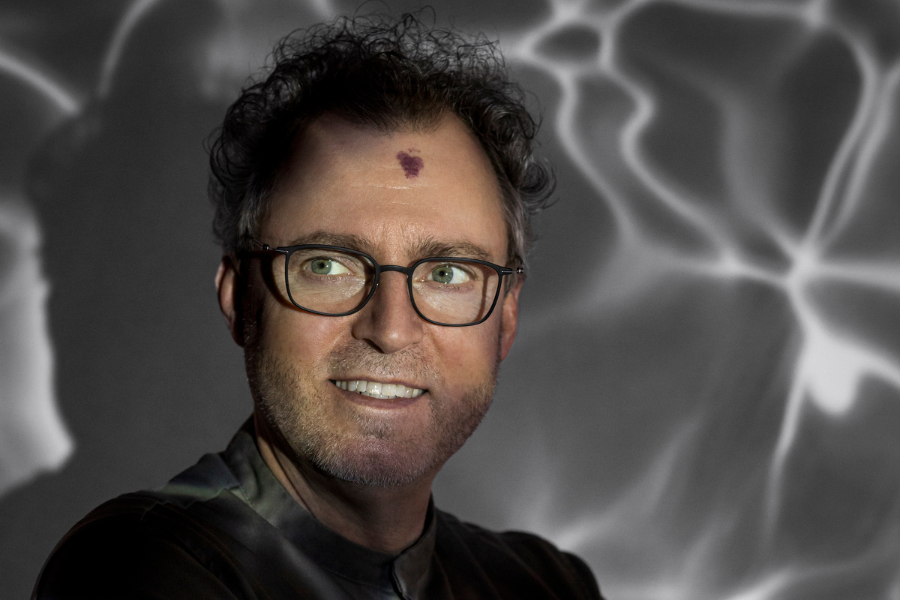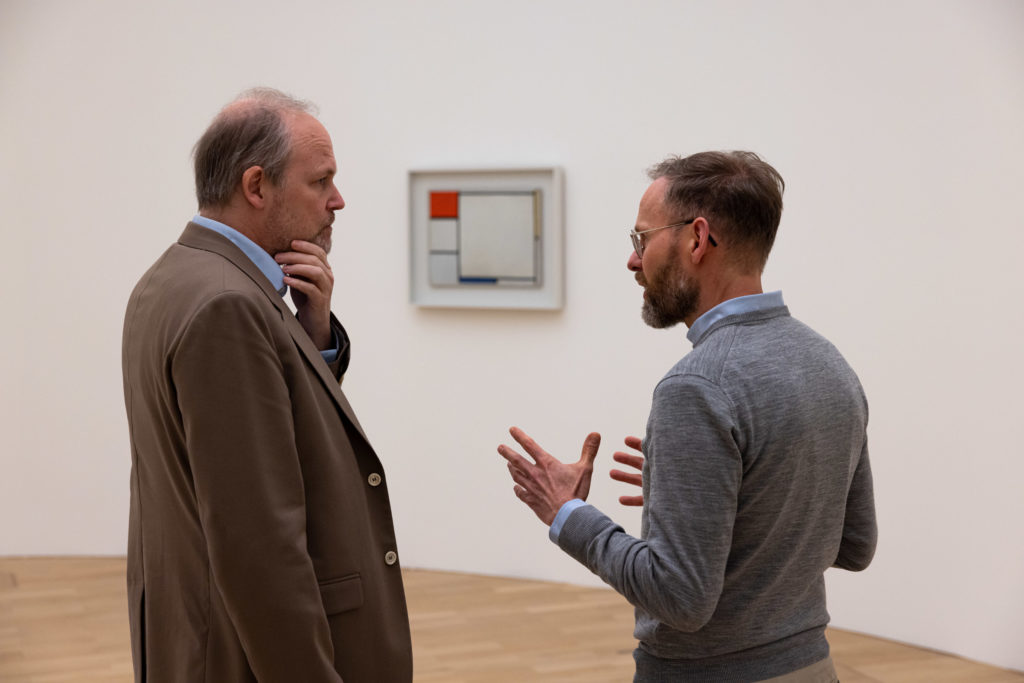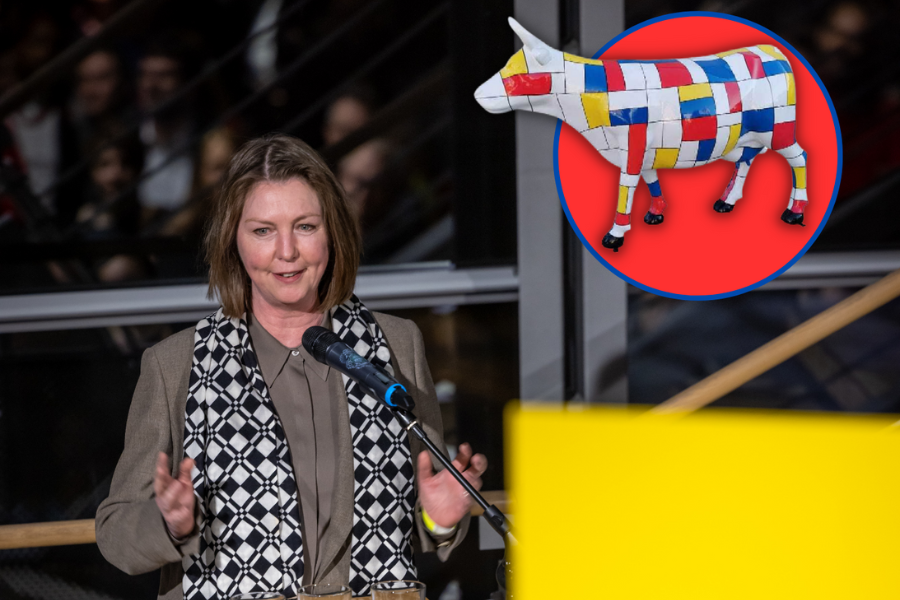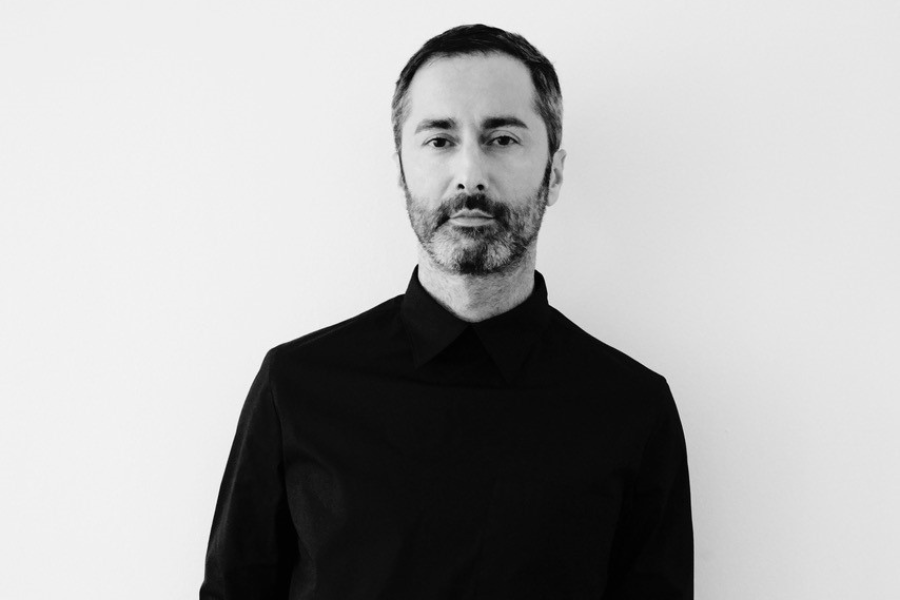Re-Inventing Piet.
Mondrian and the Consequences
Infos
From clothing and cosmetics packaging to watches, T‑shirts, bags, and even entire façades of buildings—who is not familiar with the catchy and quickly recognizable design of everyday objects which are based as uninhibitedly and bluntly appropriate the abstract compositions of one of the most important artists of the twentieth century: Piet Mondrian. Time and again, he called for art and life to be linked; and indeed, his works and their variations have visually invaded countless areas of life. Based on works from his most important creative period, the exhibition offers an insight into the multifaceted exploration of Piet Mondrian’s main neoplastic work through around 150 artworks and objects.
Like hardly anyone else, Piet Mondrian (Amersfoort, Netherlands 1872 – 1944 New York, USA) managed within a few years to break away from figurative painting and develop a trend-setting abstract style which, in his extensive art-theoretical writings, he called “New Plastic” or “Neo-Plasticism.” Mondrian’s ostensibly simple compositions of initially black lines with colored rectangles on a white, light blue, or gray ground did nothing less than revolutionize the artworld. And although his Neo-Plastic works were difficult for many to access, no other artistic position in the twentieth and twenty-first centuries has been cited, copied, varied, appropriated, adapted, or satirized as often and in as many ways as Piet Mondrian’s—by fashion, advertising, architecture, design, and—above all—by art itself. With some 150 artworks and objects, the exhibition Re-Inventing Piet. Mondrian and the Consequences provides insight into the multifaceted exploration of Mondrian’s Neo-Plastic main work. A selection of works by Piet Mondrian from the period 1913–1936 is on display in a central rotunda.
The participatory project “Bring your own Mondrian,” in which all visitors are invited to bring “Mondrianalia” from their own environment, reveals already at the beginning of the exhibition the diversity of adaptations and the commercial appropriation of “the Mondrian brand.” As early as the 1960s, Yves Saint Laurent’s famous cocktail dresses helped popularize his work and influence many areas of life, bringing Mondrian’s ideas to the public eye. With her work, Sylvie Fleury thematizes the rise to luxury in the fashion industry.
Numerous examples from the Dutch environment of the De Stijl-Movement, to which Mondrian also belonged, pay testimony to the fact that, in the 1910s, fellow artists such as Bart van der Leck, Theo van Doesburg, and Gerrit Rietveld were also striving for new forms of design. In Paris, Mondrian later participated in the Constructivist-oriented artist associations Cercle et Carré, which also included Sophie Taeuber-Arp, Jean Gorin, and Kurt Schwitters, and Abstraction-Création, which included Marlow Moss and Władysław Strzemiński. After emigrating to the United States in 1940, Mondrian met Lee Krasner, with whom he shared a preference for jazz and the idea of rhythm in painting.
The subsequent reception of Mondrian’s groundbreaking compositions and his influence on later generations of artists is presented in the exhibition under various aspects. Works by Hal Busse, Mary Heilmann, Sarah Morris, and François Morellet/Tadashi Kawamata, for example, are situated in the field of tension between construction and deconstruction. Using different strategies and within the framework of their own individual artistic expression, a number of artists deal with Mondrian in a constructive, adaptive, or citational way. Examples of Mondrian adaptations from the field of architecture (by Yacoov Agam, among others) are presented via projections in one of the museum’s east cabinets.
The chapter focusing on reconstructions offers a selection of works that either recreate concrete images by Mondrian in two or three dimensions or are worked in Mondrian’s style: In reference to Mondrian’s last phase of work, Tom Sachs’s picture consists entirely of adhesive tape, and Gregor Hildebrandt’s precisely reconstructed “Mondrians” are made of audio tapes in various colors. The “plywood paintings” by Mathieu Mercier, deliberately sloppy in both material and painterly execution, represent a deliberately ironic, subversive confrontation.
The title of Dennis Oppenheim’s sculpture is also subversively provocative, suggesting that it is an “exploded Mondrian.” From a formal as well as cultural distance, Remy Jungerman engages with Mondrian by combining his modernist aesthetic with references to Maroon culture and with West African elements, while at the same time questioning the Western canon of art. In a radical iconoclastic gesture, Iván Argote takes action in his short video when he seeminly covers two famous paintings at the Centre Pompidou in Paris with spray paint, thus questioning the value of art.
Under the aspect of reflection and reception, Joseph Kosuth approaches Mondrian’s paintings on a conceptual level by quoting various statements from Mondrian’s writings within a typical Neo-Plastic mesh of lines. Claudia Angelmeier and Melissa Gordon also delve deeply into the history of reception by referring to the secondary literature on Mondrian. Jörg Sasse’s photography traces the migration of Mondrian borrowings in the design of everyday objects of the postwar period.
The success story of Piet Mondrian’s Neo-Plastic art lies mainly in the ostensibly simple and at the same time easily recognizable combination of rectangular design structures and the limitation to the three primary colors red, yellow, and blue. In terms of cognitive psychology, it seems to be sufficient to see Mondrianesque “pictures” in certain constellations of color and form, as can be seen, for example, in the works of John Bodin, Philippe Calia, and Saul Leiter.
The exhibition Re-Inventing Piet. Mondrian and the Consequences is accompanied by a comprehensive and richly illustrated publication (approx. 300 pages, 300 illustrations), edited by Andreas Beitin and René Zechlin and published by Verlag der Buchhandlung Walther König, Cologne. The German/English edition, designed by the Berlin-based Studio S/M/L, includes an introduction by Andreas Beitin and text contributions by Friedrich von Borries, Nancy J. Troy, Wolfgang Ullrich, and Marek Wieczorek. Available for 39 € in the museum shop or at kunstmuseum.de/shop.
Concept and curator
Andreas Beitin
Co-curator
Elena Engelbrechter
Curatorial Assistant
Carla Wiggering
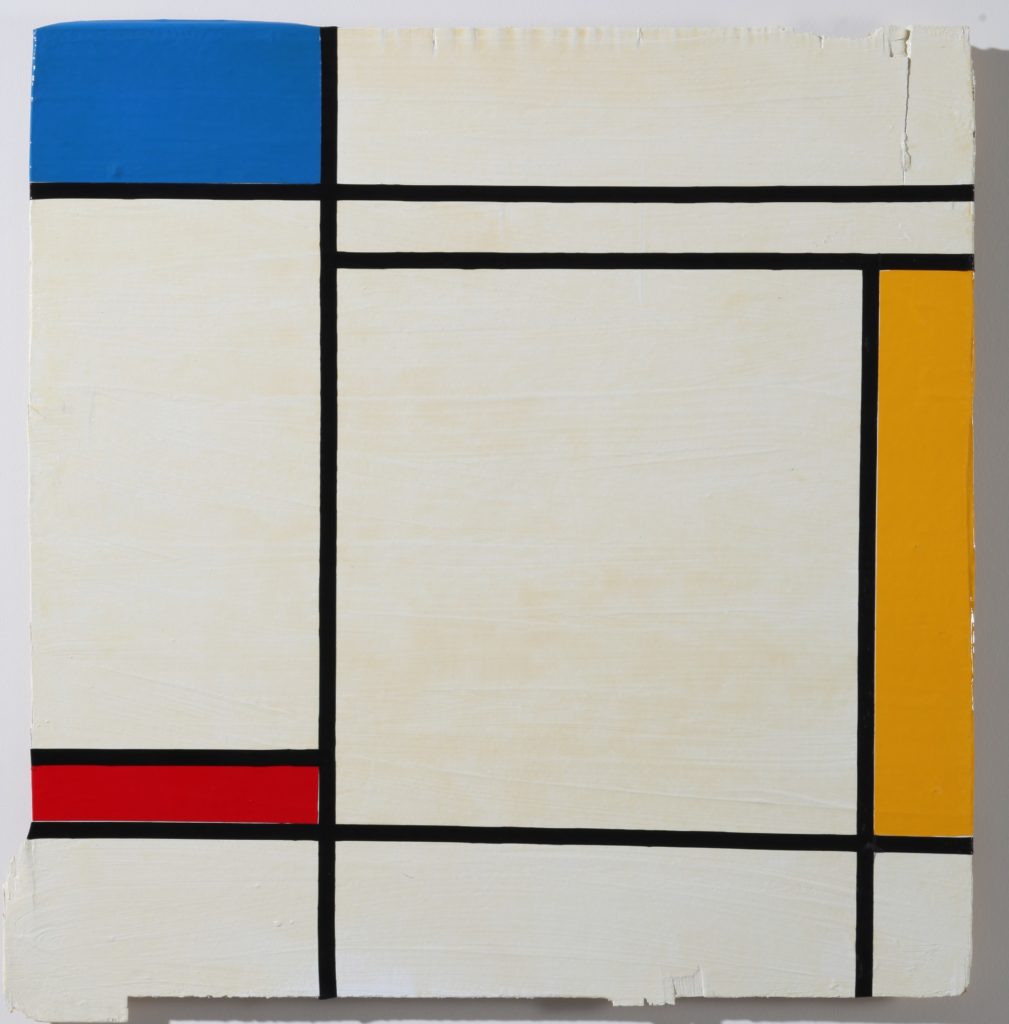
Publication
Magazin
Review: Volkswagen Group Art4All mit Mondrian Look Contest
Volkswagen Group Art4All im Juni: Look like a Mondrian
Review: Volkswagen Group Art4All mit Sven Elverfeld
Theaterstück BLI-BLIP begeistert klein und groß
Blumengrüße à la Mondrian zu Pfingsten
Volkswagen Group Art4All im Mai mit Sven Elverfeld
Review Volkswagen Group Art4All: Von Mondrian, Mr. Bean, Mickey Mouse und Nail-Art
Im Gespräch mit der niederländischen Botschaftsrätin Beate Gerlings
Matinée. Kunst und Mode mit Ferhat Kartal
With the generous support of

With kind support

In cooperation with

Media partner

